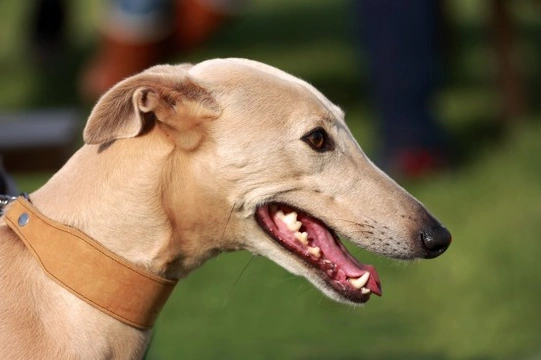
Is a lurcher a good choice of pet?
A lurcher is classed as any dog that comprises of the crossing of a sighthound with any other breed of dog that is not a sighthound, often a terrier type or a dog from a working herding breed, although any variant is theoretically possible!
While a lurcher is not classed as a purebred dog, and their breeding and appearance can vary considerably, the lurcher is one of the oldest and most popular widely recognised hybrid breeds, which has been around much longer than other crosses such as the Labradoodle or Cockerpoo!
Lurchers are widely recognised as good all round dogs that may be worked or kept solely as pets, and are one of the most widely available dog types within the UK. If you are wondering if a lurcher is the right choice of dog for you, in this article we will look at the lurcher in more detail. Read on to learn more.
What breed crosses can the lurcher consist of?
Any sighthound cross is classed as a lurcher, and some of the most popular sighthound crosses involve a greyhound, whippet, Irish wolfhound, Saluki or Italian greyhound. Across these breeds, and the other sighthound variants, sizes go from small to giant, so there is no standard size for the lurcher! Popular crosses with the sighthound side include the collie, sled dogs, and various types of terriers.
Lurchers on the whole tend to be lithe and leggy, and it is uncommon to find a lurcher that is stocky due to a genetic contribution from a particularly heavy breed.
What are lurcher’s temperaments like?
The temperament of the lurcher can vary widely depending on the contributory breeds within the crossing, but they do tend to have several traits in common. Lurchers as a whole have a very strong prey drive, and can usually run very fast, being prone to short bursts of high energy rather than endurance for long runs. Within the home, the lurcher is usually quiet and almost lazy, and they do not tend to be destructive or particularly difficult to house. They are calm, kind and affectionate, and very quiet as a general rule.
Lurchers that are crossed with high energy dogs such as the collie may be the exception to this rule, but generally, the lurcher is a quiet dog that does not need excessive levels of exercise.
Are they good with other pets?
Lurchers are generally friendly, non-defensive dogs that when properly socialised, are very good with other dogs. They can share their homes with cats when introduced young and trained not to chase the cat, but outside of the home, their sighthound instincts do mean that they tend to chase.
Do they have a strong prey drive?
Like all sighthounds, the lurcher has a particularly strong prey drive, which often manifests as a tendency to chase smaller animals outside of the home. It can be hard to train a lurcher for 100% recall effectively, and this is not always possible for all lurchers.
When walking the dog, it is important to keep them on a lead other than when in safe enclosed places, and if the dog does have a tendency to chase, to muzzle them when off the lead.
How much exercise do they require?
Lurchers, like all dogs, require at least two walks per day, but their exercise needs are not among the highest of all dogs. Providing that they can stretch their legs and run around as well as being walked on the lead, half an hour twice per day is sufficient for most lurchers, and once they return home, they are likely to be tired out and want to sleep on the sofa to recover!
Are they good with children?
Lurchers potentially make for excellent family dogs, as they are kind, calm and gentle, and love affection from people of all ages. Lurchers do like to play ball and other games with children, and they are inquisitive and like to be involved in things, but they usually run out of energy long before the kids will!
Lurchers that are smaller, such as crosses involving the tiny Italian greyhound, can be fairly fragile, and it is important to ensure that they do not become hurt or injured by overly enthusiastic play.
What kind of home do they need?
Lurchers are a good fit for all kinds of families, and they do not need a particularly large home and garden to be happy. They do need safe, enclosed access to a space where they can run, so close proximity to dog walking parks or enclosed fields are important.
The person responsible for training the lurcher should have a good grasp of the traits and temperaments of sighthounds, and what this means in terms of their prey drive and propensity to chase other animals, and be prepared to work on the dog’s recall, which can take some time.



